Thorn Carving Item Number: Af355 from the MOA: University of British Columbia
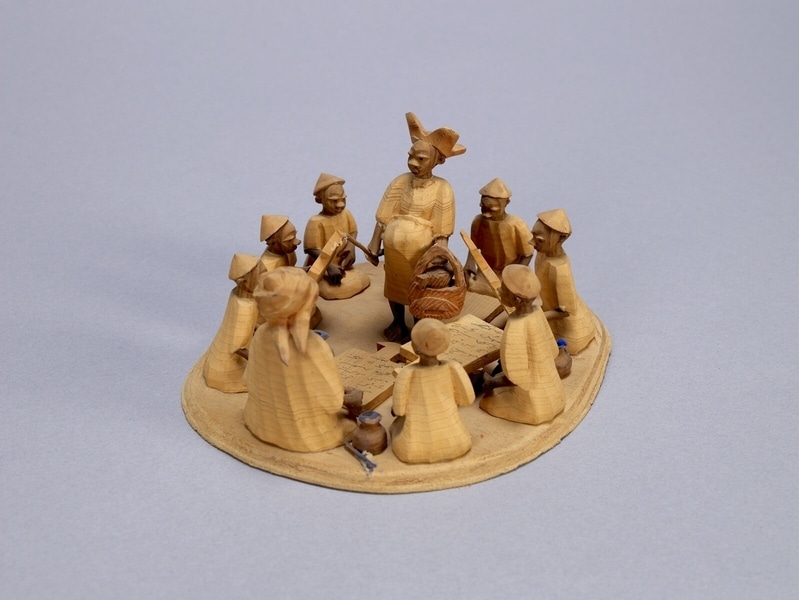
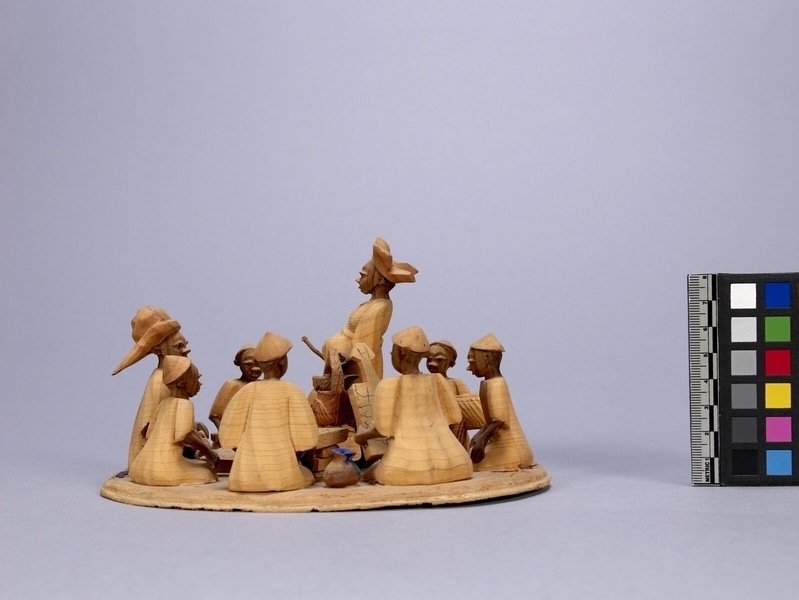
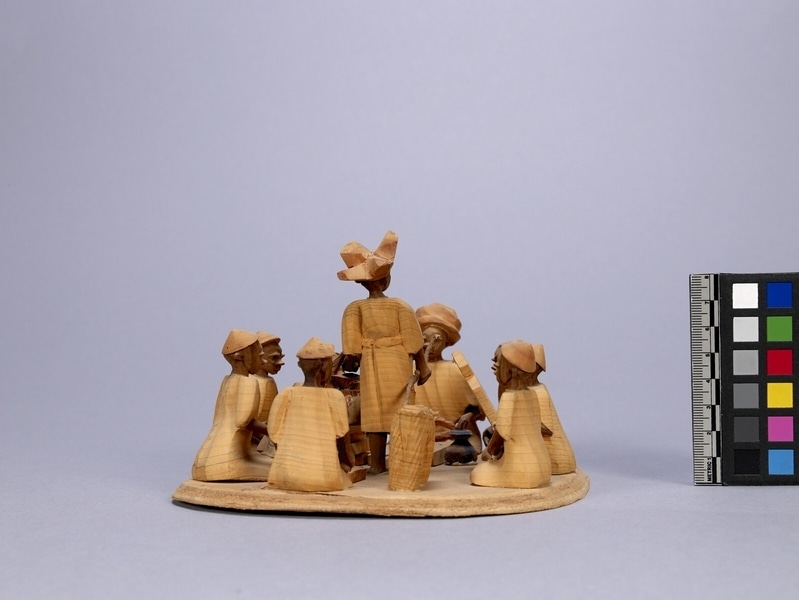
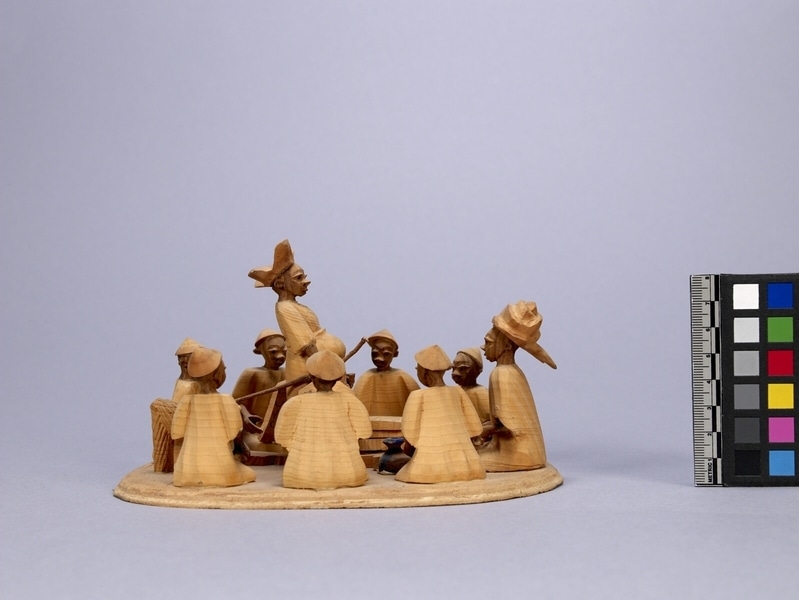
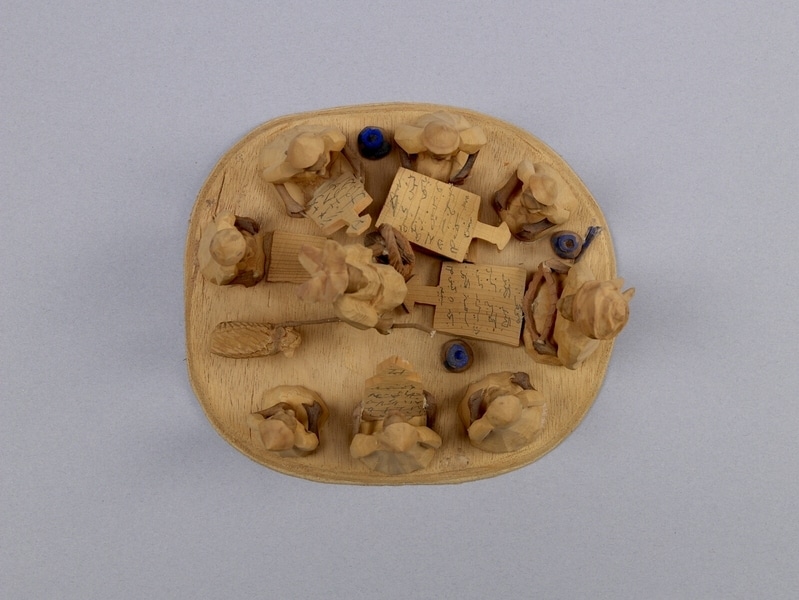
Description
Scene from a ritual, possibly Moslem, with eight sitting figures representing people, four of which are with arabic texts surrounding a woman leading an animal by a rope and carrying a chicken in a container. Seven of the sitting figures are wearing conical hats, the eighth of which has a turban with protruding ends, and are wearing long robes. The woman is wearing an upturned four-cornered hat and knee-length dress as she appears to be pregnant. Dispersed among the figures are three pots painted blue at the rims. A blue stained brush lies beside the turbaned figure. This same figure holds an oval object in his lap. The robes, tablets, and animals are light yellow-brown. Human heads, limbs, chicken, pots, and rope for the animal are dark brown. Head gear, basket, and object being held by the turbaned figure are light red-brown. Base is light brown wood.
History Of Use
Thorn carvings are miniatures depicting scenes from Nigerian life. This type of carving began circa 1930. Thorns vary in size. They can be as large as 12.7 cm. long and 9.6 cm. wide. They are comparatively soft and easily carved. The light yellow-brown thorn and the dark brown thorn come from the Ata tree; the light red-brown thorn comes from Egun trees. The parts are glued together with viscous paste made from rice cooked with water. They are carved by men.
Cultural Context
craft; tourist art
Item History
- Made in Nigeria before 1972
- Collected during 1972
- Owned by Andrew Stewart and Jessie Stewart before February 8, 1980
- Received from Andrew Stewart (Donor) and Jessie Stewart (Donor) on February 8, 1980
What
- Name
- Thorn Carving
- Identification Number
- Af355
- Type of Item
- carving
- Material
- atum thorn, egun thorn, rice adhesive, fibre, paint and wood
- Manufacturing Technique
- carved and glued
- Overall
- height 10.3 cm, width 18.0 cm, depth 15.8 cm
Who
- Culture
- Yoruba
- Previous Owner
- Andrew Stewart and Jessie Stewart
- Received from
- Andrew Stewart (Donor) and Jessie Stewart (Donor)
Where
- Holding Institution
- MOA: University of British Columbia
- Made in
- Nigeria
When
- Creation Date
- before 1972
- Collection Date
- during 1972
- Ownership Date
- before February 8, 1980
- Acquisition Date
- on February 8, 1980
Other
- Item Classes
- carvings & sculpture
- Condition
- good
- Accession Number
- 0590/0041